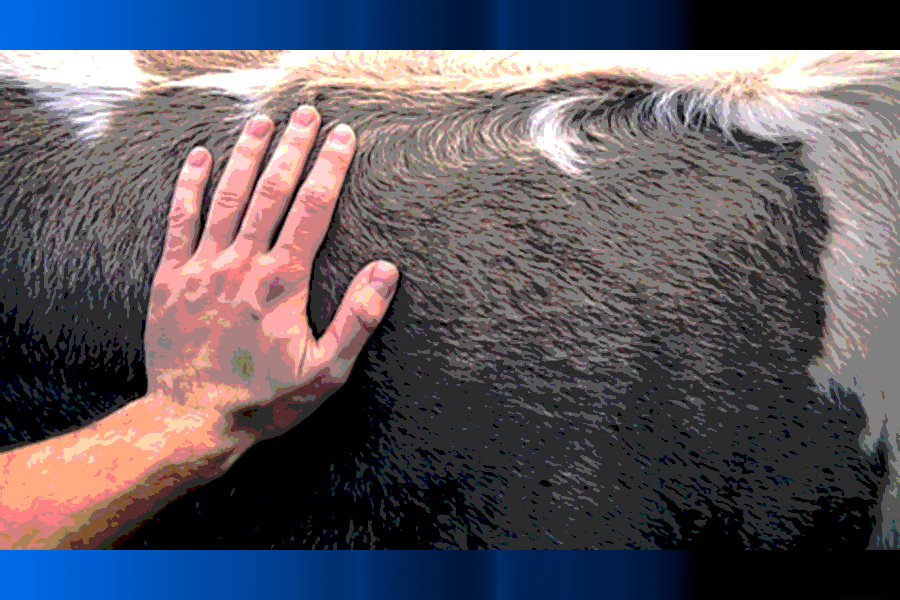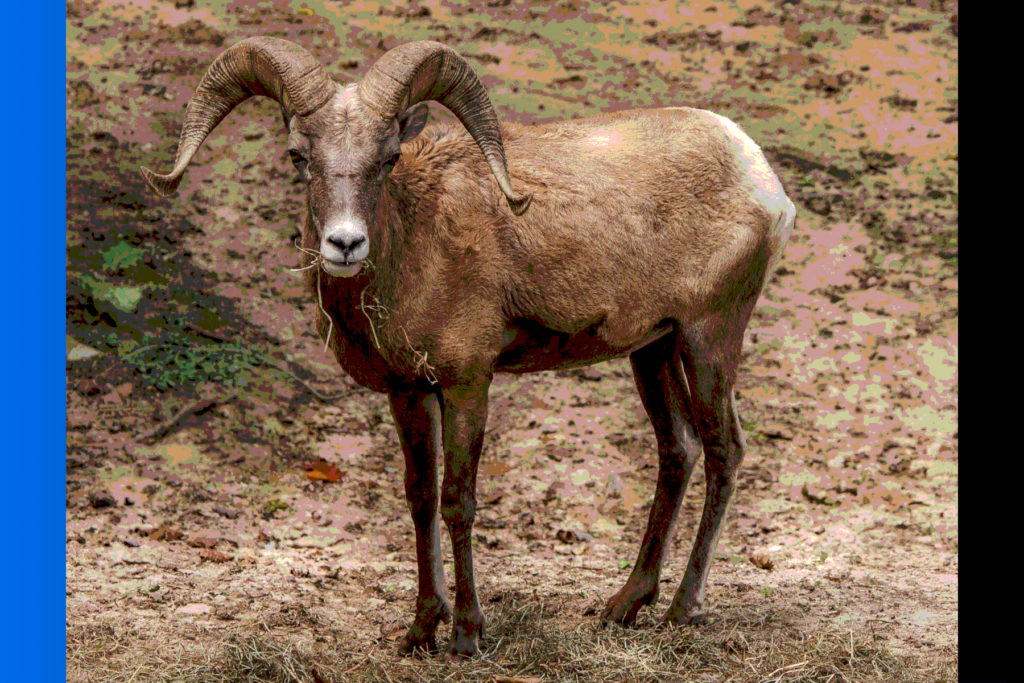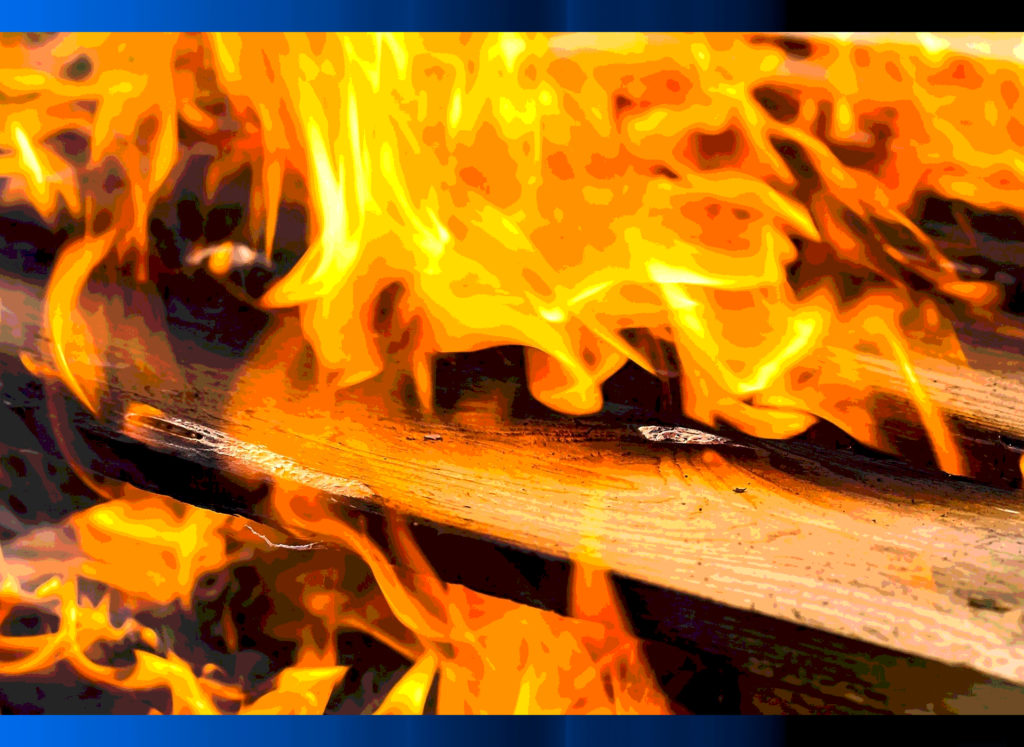
(4 – 5 Minute Read)
Leviticus 1:1 – 5:26
Vayikra commences the book by the same name, otherwise known as Leviticus. The Almighty called to Moses and spoke to him from the Tabernacle, giving instructions through him to the people of Israel.
When a person presented a burnt offering of cattle, sheep, or goats, he was to select a male without blemish. He would bring it to the entrance of the Tabernacle, and lay his hand upon its head, to serve as an expiation for him. The animal was to be slaughtered before the Most High, and Aaron’s sons, the priests, would offer the blood, dashing some of it on the sides of the altar. The animal would be cut into sections and burnt on the altar. If a pigeon or turtledove was to be presented as a burnt offering, the priest would remove the head and tear it open partially by its wings, drain some blood on the side of the altar, and then burn it thereon.
When a person presented a meal offering to the Eternal One, it was to be of fine flour, oil, and frankincense, given to Aaron’s sons, the priests. An offering of meal baked in the oven, on a griddle, or on a pan, would also be of fine flour, turned into unleavened cakes with oil. For a meal offering of first fruits, new ears of grain or produce was to be parched with fire and brought along with oil and frankincense.
For all of these meal offerings, the priests would remove a token portion and burn it on the altar, turning it into smoke and a pleasing odor to the Most High. The remainder would be for Aaron and his sons.
No meal offering to be burned could contain leaven (i.e. yeast) or honey. Such foods could be presented as an offering of choice products, but they could not be burned on the altar. All offerings must be seasoned with salt.
When a person would offer a sacrifice of well-being from the cattle, sheep, or goats, male or female, it was to be without blemish. He would lay his hand on the head of the animal and slaughter it at the entrance of the Tabernacle while Aaron and his sons would dash some of the blood on the altar. He was to present the [abdominal, intestinal] fat about the entrails along with the kidneys and the protuberance on the liver, and the fat of these organs as well. For sheep offerings, the tail was also offered. These portions of organs and their fat would be burnt on the altar and turned into smoke, a pleasing odor to the Eternal One.
All [abdominal, intestinal] fat belonged to the Almighty. It was a law for all time throughout ages and in all the settlements of the Jewish people. No [abdominal, intestinal] fat or blood was ever to be eaten.

The Almighty spoke to Moses, telling him to instruct the Israelite people regarding when a person incurred guilt by unintentionally transgressing any of the commandments of the Eternal One.
If an anointed priest incurred guilt so that blame fell upon the people, or if the entire congregation of Israel erred unknowingly, the priest would offer a bull without blemish as a sin offering to the Most High. In the first instance, the priest would lay his hand upon the head of the bull; in the second, the elders of the community would do so. The bull would be slaughtered at the entrance of the Tabernacle. The priest would dip his finger in the blood and sprinkle it seven times before the curtain of the Holy of Holies, and also place some blood on the corners of the incense altar.
If a chieftain unintentionally sinned against the Almighty’s commandments, he was to offer a male goat without blemish. If a common person had done so, a female goat or sheep without blemish was required. The offerer would lay his hand on the animal, and it would be slaughtered. The priest would dip his finger in the blood and place it on the corners of the altar, and pour out the rest of the blood at the base.
For all of these offerings, the [abdominal, intestinal] fat and some of the organs would be removed and burned on the altar, just like the sacrifice of well-being [see chapter 3]. For the offered bull, the rest of the entire bull would be brought to a clean place outside of the camp and burned upon a fire of wood.
If a person incurred guilt unknowingly by: failing to testify when required; touching any unclean thing or unclean carcass; touching any human uncleanness; uttering an oath improperly — when he realized his guilt in any of these matters, he would confess his sin. He would also offer a female sheep or goat as a sin offering for his penalty before the Almighty.
If the offender could not afford a sheep, then he would bring two turtledoves or pigeons. The priest would offer the first bird as a sin offering and the second as a burnt offering.
If the offender could not afford two turtledoves or pigeons, he would bring a select amount of fine flour. He would not add any oil or frankincense, since it was a sin offering. The priest would remove a portion and burn it on the altar; he would keep the rest, like the meal offering.
When a person had trespassed by unknowingly being negligent of any of the sacred things, he would bring as his penalty a ram without blemish from the flock, convertible to silver, as a guilt offering. He would make restitution for that which he failed to do, and add a fifth part (i.e. 20%).
When a person sinned without knowing it against any of the Almighty’s commandments about things not to be done, he was subject to punishment. He would bring a ram or its equivalent to the priest as a guilt offering.
The Most High told Moses that when a person sinned by: dealing deceitfully with a deposit or pledge; engaging in a form of theft; defrauding his fellow; finding a lost item and lying about it; or swearing falsely in certain matters — when a person realized their guilt, he would pay to the owner the principal amount plus a fifth part (i.e. 20%). He would also bring a ram without blemish or its equivalent as a guilt offering.
In all these matters the priest would thereby secure expiation for the offender, and forgiveness would be obtained.

Vayikra begins the description of the various offerings and sacrifices required for presentation in a variety of circumstances. The five main animals used for sacrifices were cows, sheep, goats, turtledoves, and pigeons. Rabbi Don Yitzchak Abravanel and other rabbinical commentators have noted this fact and elaborated on it. Abravanel asserts that the different types of offerings representing the three patriarchs, Abraham, Isaac, and Jacob. Bereshit / Genesis 18:7 says that Abraham “ran to the cattle and chose a calf” to prepare for the three visitors. In Bereshit / Genesis 22:7-8, Isaac is equated with a sheep or ram presented for a burnt offering. And Jacob is repeatedly associated with goats, as in Bereshit / Genesis 27:8. Abravanel further postulates that the turtledove and pigeon represent Moses and Aaron respectively.
Similarly, when the Most High ratified the Covenant Between the Parts (Brit Bein HaBetarim) with Abraham in Bereshit / Genesis 15, the Almighty commanded him in verse 9 to bring a cow, a ram, a goat, a turtledove, and another bird. Thus, the offering of these five animals can be linked directly to the mystical covenant that the Almighty made with Abraham in which He described the future enslavement of the Jewish people and their ultimate redemption, possessing the land of Israel for perpetuity. Thus we see that even from the days of Abraham the Eternal One had created a formula for offerings with deep spiritual parallels that would be permanently linked to the essence of the Jewish people.
The ongoing theme of the Torah narrative is holiness. After the initial encounter at Mount Sinai, the Almighty began to outline to the Jewish people how they as a nation and people could achieve holiness through a unique set of formulas that define much of the Torah. First, the Most High described the holiness of the Mishkan, or Tabernacle, and the service, items, and instruments thereof. And the holiness of Shabbat was expressed repeatedly in that context. The holiness of the Levitical priests was also defined. And ultimately the holiness of the entire nation of Israel was presented through a variety of Torah instructions ranging from rejecting idolatry to avoiding sexual immorality to eating kosher food to keeping Shabbat and festivals, and much more.
One of the most important aspects of these discussions of the Almighty’s directives for achieving holiness is how detailed the formulas are. The Most High made it very clear that the methods presented for us to achieve holiness and to connect with Him were detailed sets of instructions; very few of the Torah commandments are vague or ambiguous. And in keeping with the spirit of the Torah and Moses’ presentation, our chachamim, or rabbinical sages of blessed memory, have expanded upon the mitzvot, or commandments, of the Torah further; additional details have been provided and any ambiguity has been further eradicated.
As human beings, we have a tendency to seek to achieve holiness and spirituality in our own way. This theme resurfaces repeatedly throughout the Torah, beginning with Adam and Eve who sought to “become like G-d” by disobeying their Creator and eating the fruit from the tree of the knowledge of good and evil. Similarly, some have asserted based on the teachings of the RambaN and others that the infamous golden calf incident was yet another attempt by humanity to avoid the Most High’s detailed formulas that require strict attention and adherence. Rather than following the commandments that had already been given, and instead of waiting for Moses to bring additional instructions from the Almighty, they disobeyed and sought to connect to the Eternal One through their own way — idolatry. As we see time and again throughout the entire Torah and Tanakh narrative, such attempts to do things our own way inevitably result in disaster. Rather, it is incumbent upon us to do things according to the Most High’s instructions, even when that involves a careful (and perhaps even tedious) attention to detail. And this attention to the minutiae has defined our entire religious practice of Judaism, helping to set it apart from essentially every other religion on earth.
May the Holy One, Blessed be He, enable us to utilize the formulas He has presented us to further connect with him and bring holiness into our lives and our environment. And may the Holy One, Blessed be he, give us the strength and fortitude to observe His Torah in every way, including the every-important minute details.


